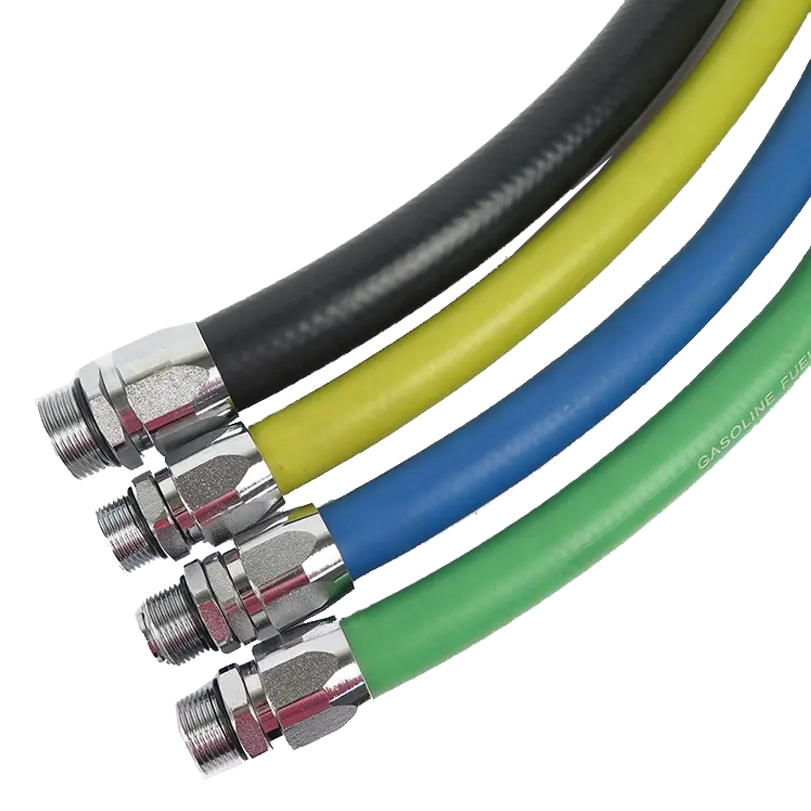335345435
Oct . 10, 2024 18:58 Back to list
High-Pressure Hydraulic Hose Options for Superior Performance and Durability
Understanding 3/4 Hydraulic Hose A Key Component in Fluid Power Systems
Hydraulic hoses are essential components in various machinery and systems that utilize fluid power. Among the myriad sizes and specifications, the 3/4 hydraulic hose stands out as a popular choice for numerous applications. This article delves into what makes the 3/4 hydraulic hose a vital asset in industries ranging from construction to agriculture.
Construction and Specifications
A hydraulic hose is designed to transport fluids under high pressure efficiently. The 3/4 designation refers to the internal diameter of the hose, indicating that it has a 0.75-inch opening. These hoses are typically constructed from a rubber or thermoplastic material, reinforced with layers of synthetic fibers, steel wires, or both. This construction not only provides flexibility and durability but also enhances the hose's resistance to abrasion, weather, and various chemicals.
Applications
The 3/4 hydraulic hose is widely used in hydraulic systems, where it serves various functions. It can be found in hydraulic machinery such as excavators, backhoes, and forklifts, where it transfers hydraulic fluid from the pump to the actuator, enabling movement and operation. In agricultural settings, these hoses are crucial for tractors and other farm equipment, allowing them to efficiently perform tasks like plowing, planting, and harvesting.
Moreover, industries such as manufacturing, mining, and automotive also rely heavily on 3/4 hydraulic hoses. For instance, in manufacturing, hydraulic hoses are used to operate presses, lifts, and conveyors, while in mining, they transport high-pressure fluids necessary for powering drilling equipment.
3/4 hydraulic hose

Advantages
One of the most significant advantages of using a 3/4 hydraulic hose is its ability to handle high pressures. Most hydraulic applications operate at pressures ranging from 2,000 to 4,000 psi, and a quality 3/4 hose can accommodate these pressures without compromising safety. Additionally, the size offers an optimal balance between flow rate and pressure drop, ensuring that machinery operates efficiently.
The flexibility of these hoses is also a noteworthy feature. This flexibility allows for easier installation and routing in complex environments, where adaptability is crucial. Furthermore, the robust construction of a 3/4 hydraulic hose means that it can withstand rugged conditions, reducing the frequency of replacements and repairs.
Maintenance and Safety
Proper maintenance of hydraulic hoses, including the 3/4 variant, is vital to ensure their longevity and functionality. Regular inspections for signs of wear, such as cracking or bulging, can help prevent catastrophic failures. It's also essential to ensure that connections are secure and leak-free, as hydraulic fluid leaks can pose safety hazards, including fire risks.
In conclusion, the 3/4 hydraulic hose plays an indispensable role in many hydraulic systems across various industries. Its robust construction, combined with its ability to handle high pressures and flexibly adapt to different applications, makes it an invaluable component. Whether in construction, agriculture, or manufacturing, understanding the significance of this hydraulic hose can aid in optimized performance and enhanced safety in fluid power systems.
-
SAE 100 R17 Black Smooth Cover Hydraulic Hose
NewsMar.07,2025
-
SAE 100 R17 Black Smooth Cover Hydraulic Hose
NewsMar.07,2025
-
SAE 100 R17 Black Smooth Cover Hydraulic Hose
NewsMar.07,2025
-
SAE 100 R17 Black Smooth Cover Hydraulic Hose
NewsMar.07,2025
-
SAE 100 R17 Black Smooth Cover Hydraulic Hose
NewsMar.07,2025
-
steel wire braided hydraulic hose
NewsMar.07,2025



